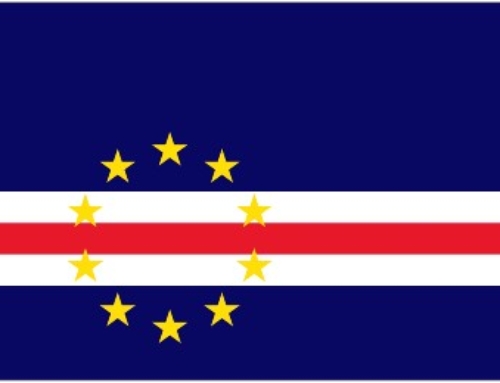
Lisbon, Portugal
Lisbon is one of my earliest blog visits and what fond memories I still have of this city. I remember the hills most of all, they are everywhere. Counter this by taking trams everywhere – unusual for me not to walk, but long slopes in hot, sunny weather do not go together well. The fun was actually the trams, an unexpected delight, many still in their old regalia and preserved so well. You are nearly touching the walls of the side buildings as they negotiated the narrow alleys.
See the Geronimos Monastery and gaze at the spectacular modern bridge over the Tagus estuary. Sip cold drinks in the main square cafes and dine al fresco in any of hundreds of restaurants at night …. bliss.
My trip to Lisbon was a long weekend event but I found that I covered most of what I wanted to see. There is always more that you want to do once you get there. Unless you are going to take up a small residence period you have to work out in advance where to go, how to get there and how to make the most of the precious time you have there.
How to get from Lisbon airport to Jardim Zoologico Metro station.
I had planned how I was going to get to my hotel. Catch the Metro from the airport to São Sebastião Metro station on the red line. Change onto the blue line direction Amadores Este, two stops along this line I get off at Jardim Zoológico. Exit the Metro, with my back to the Zoo I walk 2 mins along the main road to go under the road bridge. 2 mins further to go under the train bridge and my hotel is there in front of me to the right.
I should not be able to miss it as it is 22 storey high with its name written down the length of it!!! And that is exactly what happened. It was so, so easy to get here from the airport that a taxi was an unnecessary, environmentally polluting expense.
Where I stayed in Lisbon.
I stayed at the 5 star Corinthia Lisboa …… one of the best hotels I have stayed in on my travels. Good because not only is the style, cleanliness, and attention to detail great but that the staff were so friendly and naturally helpful too. They chatted to me professionally but informatively whenever I asked them anything about getting around the city. They gave me a map, explained everything so I knew exactly what to do ….. such a welcome.
The room was amazing – perfectly comfortable with a sumptuous seating area and table, comfy huge bed and glorious bathroom. The views were amazing. You see over the rooftops of the city from, not only being in such a tall building, but from being up on a higher area of the city. If you get an executive level room you also get the top floor executive lounge with all the extra complimentary snacks and drinks.
There is also marvellous views across the other side of town to the famous Pont 25 de Abril Bridge and the Roman aqueduct that runs across the nearby gorge.
Get the Lisbon card.
Lisbon does have a “Lisbon Card” (click here for info), which gets you free use of all trams, buses and local trains and free entrance into most (but not all) the main tourist sites. It gives you discount of 10-50% on many others so it’s important to do the maths and see if it works for you. Its available for 24 hrs (20E), 48 hrs (34E) and 72 hrs (42E) as of 2019.
We bought it as after doing the maths it worked out much cheaper for us. It also gave us the chance to use it to get to the sites that are farther away – not everything is in the centre! The tram rides in themselves are a delight and as Lisbon is so hilly if was definitely a godsend for the uphill visits!
The original Palace square was here but the earthquake and fire that destroyed it and much of Lisbon in 1755 meant the whole area was reconstructed into what we have today. In the centre is the massive statue of King Jose I on his horse.
It is also a mini transport hub as here there is a Metro station and a large tram stop. Opposite is the ornately carved and imposing 1875 Arco da Rua Augusta, with its white carved statues and ornamentation.
The periphery buildings are mainly big restaurants with huge seating areas outside in Summer to take in the views, catch the sun and people watch. Tourist prices too I’m afraid but even if just for just a coffee, it has to be done!
We came back here one evening to walk the square in the cool after a hot day sightseeing and the views to the bridge (which reminded me of the Bosphorus Bridge in Istanbul – blog review here) and bay are wonderful. The little sand/pebble area on the shoreline in front from the square could get polluted at times and no-one thus seemed to want to use it as a beach.
Praca do Rossio
So from the big arch go under it and up the Rua Augusta. Here you can just meander around the streets with no set route. Just meander looking at the old buildings in the geometric street plan and take in the 18th century rebuilt area.
Make sure you go to Praça do Rossio with its picturesque fountain, wavy pattern mosaic pavement and see the views. There is a big column with a statue of Pedro VI on the other side from the fountain with the backdrop of the National Theatre behind.
Look along Rua St Justa to get a view of the unique decorative metal elevator of 1901 that takes you (for a fee of about 6E) to the higher level up the city street. Make sure you look at the building to the left of the Theatre. It is the most fabulously ornate entrance building to a railway station, with its horseshoe shaped portals and carved stonework.
Just round the corner is the Praça dos Restauradores and wide square with an obelisk and lined round the edges with so many different designed buildings.
We took the Metro up to Marques de Pombal station and walked into the park from here. Further up there is a mirador (viewpoint) that looks down the entire length of the perfectly maintained hedgerows and lawns of the park, with great views.
It is here that many of the city’s best hotels are also located eg Four Seasons and Intercontinental – if you fancy a high end drink and rest !
We caught the Metro back to the centre when we had completed our detour and boarded a tram for our next stop. It takes about 30 mins to get there and the Metro does go this way so make sure you know which bus or tram to take. We were headed for possibly the biggest attraction in Lisbon – the Monastery
The Monastery was inaugurated on the orders of Manuel I (1460-1521) in 1495. It was to be built in a richly ornate architectural style now called, funnily enough, “Manueline”. It wasn’t finished for another 100 years and was intended as a mausoleum for the Royal family. It went through many refurbishments until 1833, when the religious orders were dissolved and the monastery was abandoned.
The monastery withstood the 1755 earthquake without much damage. Of note is that Vasco de Gama, the famous Portuguese seafarer and explorer is buried here. He discovered Southern Africa and India and spent the night in prayer here before departing on his historical expedition to the Orient in 1497. He is buried in a side area in a large tomb.
Attached to the monastery is the Church of Santa Maria with its high ceiling and ornate interior.
The church and the monastery, like the nearby Torre de Belem, and Pradao dos Descobrimentos symbolise the historically important Portuguese Age of Discovery. This whole area is a huge national historical section of Lisbon with so much to see, so give yourself a few hours at least. Nearby are 4 national museums, a lakeside park and lots to walk around and admire.
For refreshment, across the road from the big tram stop is one of Lisbon’s most famous cake shops “Pasteis de Belem”. It sells the well known “pastel de nata” cakes. You have try this national cake – a bit like a custard tart, you can’t miss it as its opposite MacDonalds !!!
You can go up to the viewing platform and from there are fabulous views. You can see to both bridges over the Tagus estuary, over the nearby Monastery-church complex and views of the two next door Museums.
On another day we took the tram ride up to the top of the Alfama area and to the Castle of St George, “Castelo di San Jorge”.
The tram ride alone is enchanting as it goes up steep roads, trundling around the curves. It passes so close to the narrow alley walls that you can reach out and almost touch them.
We also stopped off at the mini tram hub on Santa Helena Square. Here we had a few beers in the glorious sunshine of the square at a café and admired the views over the roof tops and towards the river.
We actually noticed that the liner Queen Elizabeth was docked in the quayside on our walk previously to the tram stop. I managed to now also get a pic of it from the Square high above. From the square there are the famous views over the terracotta tiled roofs on the city and beyond.
The cool breeze, the drinks on the table, the sun in the sky, vistas of the horizon and cute trams trundling by gave this rest stop on the square a unique and wonderful feeling.
We caught the tram again and went up the last leg of the tramway and then it was a short walk up to the castle gates and we were in. The Castle of St George is of mixed architecture, Moorish mainly but many parts from the 11th century also. It contains a small village area, ruins of the Royal Palace, a museum and battlements. You can walk along the wall tops to get majestic views over all Lisbon and the estuary.
Ajuda Palace.
The Ajuda Palace (click here for opening times etc ,was agreed to be built in 1795 but delays took till 1802 for the construction of the Palace to start. The Royal family had to leave to go to Brazil in 1807 and the works drastically slowed down. It was finally finished in 1861, in time for King Louis I (1838-1889) to move in with his new bride.
It was at this point it become the official residence of the Portuguese Monarchy.
Where to eat in Lisbon.
On our last night we went out of the hotel to dine. As the night was very warm we wanted to dine al fresco. We had seen so many open air restaurants and bars on our walks that we headed back into town to an area we had seen many that looked great. We headed for Rua das portas de Santo Antao which runs up from the right side of the national Theatre in Rossio district.
It was full of outside restaurants all very busy and the choice was enormous. We picked one that looked good and had Portuguese food that we wanted to try and enjoyed the night…. the deserts were the highlight and well deserved !
June, 2014






































Great and useful information. I like the tip about the ways to get around. Some of those pictures look so lovely. We’d love to go there.
As this was one of my first posts the info is was much more limited than usual (I’ve since improved my delivery of those aspects!). Again I took limited pics as I had not started my website as yet so it is probably my most brief post. Glad you liked it, it certainly impressed me more than I thought it would.
I thoroughly enjoyed the photos of the Ajuda Palace and the info on the Lisbon Card was very useful. I wish we had something similar here in Thailand.
The Lisbon card if defo worth it. I always check out if a city has one and buy online as usually its saves you lots and encourages you to nip into somewhere that you may not otherwise, due to the extra expense.
We absolutely LOVE Portugal, even though we haven’t been yet. We’ve gotten a bit obsessed with the idea of “settling down” there (whenever we might “settle down,” lol). Us Californians feel like it would be Europe’s equivalent to California. This is a wonderful article. Thank you for sharing!
Surprising that you have fallen in love with a place you have never been to. It is indeed a beautiful country – the greener, more hilly north is very different to the flatter drier south. Lisbon would be a good choice to settle down in – several well known bloggers have settled there. I was due to visit Porto and the Douro valley in the north just as Covid hit so had to cancel it. Pity as I was really looking forward to seeing more of Portugal. Thanks for the comments, much appreciated
I’ve heard lots of good things about Lisbon but have not yet had a chance to visit. I’ve seen lots of pictures of Padrão dos Descobrimentos and would definitely love to see that. I didn’t realise there was a viewing platform – those views are fantastic. The rest of the city looks really interesting and, although we love exploring cities on foot, it’s good to know that if the weather is a bit too hot, it is possible to catch a tram. Great tip about getting the Lisbon card and it’s always nice to get a rec for places to eat in the evening.
Travel by tram in Lisbon is a real treat. U can ride the old fashioned ones too which have a wealth of charm. They are definitely needed for the long uphill trudge to the castle and are a great way to arrive as my post shows. Yep the views from that Monument are terrific and not to be missed.
Lisbon – one of my go-to places in Europe. Oh this takes mes back. It’s lovely to read your earliest accounts traveling to Portugal’s capital Barry. It’s cinematic hills and tram rides can transport one’s imagination into almost like a dreamscape. Alfama and Chiado are my favorite parts of town. And yours? I guess it’s time for me to revisit an old favorite 😉 #flyingbaguette
Jan – https://flyingbaguette.com/
Like you, I fell it is time for me to revisit this city and see any changes that have happened.
there are also a few more places I’d like to visit in the city
Another great post, Barry!
Lisbon is such a vibrant and interesting city. I was gobsmacked by the sheer size of the Padrão dos Descobrimentos. I truly had no concept of how big it was until I was standing near it. I also loved the Castelo with its incredible views of the city. I also found that the math worked for a Lisbon card when I went. The transportation options alone made organizing my days so much easier.
Yep, the Lisbon card is great value and I’d certainly recommend anyone looking into it when exploring the city for a few days. The castle views are stunning and using the tram to get to it is the best option.
Lisbon has been all over the place and it looks like a magical city to visit. I do worry with my bad knee about all of the hills, but the views seem like it’s worth the climb to the castle. I like the public transportation option in the city to get around on a budget and see more local spots!
I have to admit going up to the castle was an effort even though we took the tram. The castle grounds still require walking uphill and even though I’m fairly fit it was tiring.
We used public transport everywhere as it was so easy, cheap and fun.
Lisbon is known for being the city of 7 hills and having lived in the capital for 12 years, I know perfectly well what a struggle it is to climb each one of them… but at least we’re always fit and don’t need to spend fortunes in the gym ahahahah
Good article about my beloved Lisbon
Lucky you have been able to live in Lisbon. I know it is very popular at present with digital nomads, and rightly so.
Have you had a chance yet to travel to Lisbon again? I would love to hear your thoughts on how you compare it to other parts of Portugal. I hear lots of great things from Lisbon, but then I also head greatness of Porto and it wasn’t anything at all. Lisbon seems to have gained a huge popularity amongst travellers and digital nomads, I can imagine it to be very packed. Like you I would take the tram (not going to struggle walking uphill in summer heat) and admire the views over town from the countless viewing points.
Carolin | Solo Travel Story
I passed through Lisbon in December in transit but never got to get outside of the airport as planned.
I’ve heard lots about Porto and it’s on the list, especially as several friends have come back from there in past months and said how great it was.
How have I not been to Portugal yet? Lisbon seems like a great city, one I’d love to explore. The monastery is stunning, and the whole city seems to have so much history. I too would be enamored with the trams, what a fun way to get around – and so iconic when you think of Lisbon. A great guide, and you’ve definitely made this go higher on my list
Am glad I have got your interest in Lisbon as it is such a great city to explore. So many bloggers have been here and there are so many different viewpoints about the city that I just had to see it for myself. Get there when you can !
I love the intricate details on the monastery and Padrão dos Descobrimentos exteriors. So cool to see the the layers of ancient ruins of the cathedral during its excavation. I’ve read so many blog posts about Lisbon lately and I’d reeeally like to visit someday, hopefully soon! I’d love to take the famous tram around town.
Lisbon is one of those places that most get to see in their lifetime and seems to be on every bloggers list. The trams are gorgeous to ride just for the fun and experience, even if you don’t particularly need to get anywhere in them.